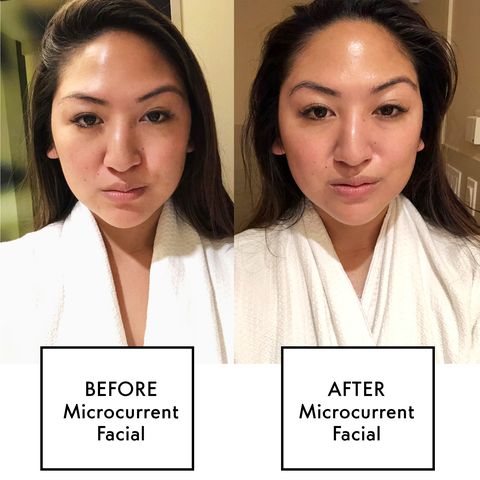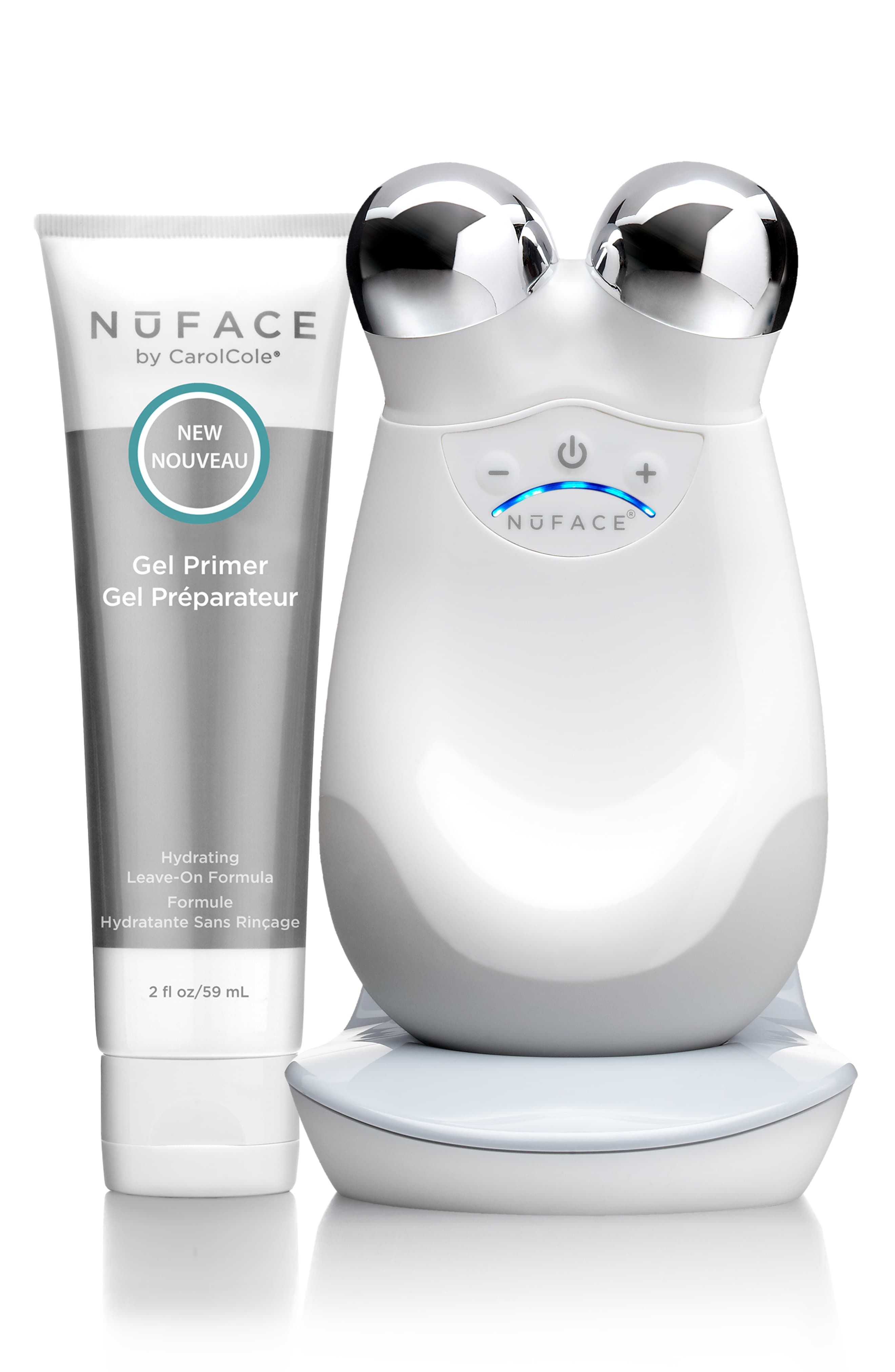The beauty industry is rife with over the top claims about “miracle” skincare products and services, but one too-good-to-be-true innovation I can confidently get behind is the microcurrent facial. It involves using a low-grade electrical current to “train” your facial muscles to appear more lifted, tightened, and firm. In fact, its nickname is the “non-invasive facelift.”
You know it actually works because it has been used medically since the 1980s, approved by the FDA as a muscle stimulator to treat Bell’s palsy and muscle paralysis. After noticing improved results in patients with atrophied, sagging facial muscles, microcurrent was then adopted as an anti-aging tool. Top facialists like Joanna Vargas, Ildi Pekar, and Shamara Bondaroff swear by it, while at-home tools like NuFace and Ziip have become increasingly popular in everyday skin routines.
I experienced the magic of a microcurrent facial myself while visiting the Carillon Miami Wellness Resort. Feeling extra dry, dull, and puffy from flying and drinking beachside cocktails to my heart’s content (how could you not?), I was looking for a treatment to contour my face and give it its glow back. Before getting into the facial, I gave myself half an hour to indulge in the massive spa’s hydrotherapy circuit: I jumped back and forth from massaging waters, saunas, and steam rooms. By the end of it, my muscles felt melted like butter and all the steam had my face ready for Carillon esthetician Nerys Rodriguez to start my 80-minute microcurrent facial.
I walked away from the treatment room with visibly plumper-looking skin, major lift around my brows, more of a defined jawline, and more prominent cheekbones. I felt so confident that I totally skipped the usual contouring I do when I applied makeup later that day.
Impressed by my results, I chatted with the esthetician about microcurrent facials, how they work, and why people love them so much they’re getting them weekly.
Microcurrent facials are like a gym workout for your face.
“The muscles on the face start going south, just like everything else. We have to keep it fit. So, we use current to stimulate the muscle, starting low then increasing gradually until you have the firmness you would like,” Rodriguez explains. While Rodriguez says having a microcurrent facial once a month is sufficient, she adds that clients of hers at Carillon—the wellness resort is also residential—come weekly.
She adds that a microcurrent facial also doubles as an lymphatic drainage massage. “That’s why you were less puffy afterward,” she tells me. “We’re hitting a lot of the pressure points on the face.”
Microcurrent facials keep skin firm.
“Results are the eyes will be lifted, the forehead gets tighter, and you’ll see more of an ‘awakened’ look,” Rodriguez says. “It also stimulates collagen, so you’ll have a fuller look as well. Collagen is the main protein the body has to build muscle. As we age, we lose collagen.” As Rodriguez explains, microcurrent has been shown to encourage the production of ATP (Adenosine triphosphate), which leads to the creation of structural proteins like elastin and collagen.
The procedure starts out like a regular facial.
The entire process included cleansing, LED light therapy, exfoliation, serums, and masking. Rodriguez applied a thin film of a conductive gel on me (you can use any water-based gel) then used a microcurrent machine, which had two wands that the electrical current ran through. I didn’t feel any discomfort nor pain, just the cool metal wands lifting sections of my face and staying put for a few seconds and repeating before moving to the next section. “It’s sending a signal for the muscle that this is where it belongs,” Rodriguez says of “training” the facial tissue by going over different parts of your face multiple times.
Microcurrent is really safe for most people, but there are a few exceptions.
“People with heart issues, like if they have a pace maker, are not advised to get a microcurrent facial because it stimulates the blood,” Rodriguez says. She also doesn’t recommend microcurrent facials for those with severe acne, adding, “If it’s a pimple here or there we can do it. If it’s aggravated, I would not recommend it. There’s a lot of inflammation going on, so we don’t really want to stimulate that.” Pregnant women in their first trimester are also cautioned against doing it.
If you’ve had fillers or Botox, you should wait two weeks for it to settle before getting a facial. “We don’t want to alter their results,” Rodriguez says. After that period, however, “[botox and fillers] actually work better when you get microcurrent, because it’ll make your procedure last longer. I actually recommend it, and I’ve seen great results where it lasts even longer, like the fillers and the Botox.”
At-home microcurrent tools work, but are not as strong as professional tools.
Rodriguez says younger clients can get away with using at-home microcurrent tools for maintenance. “You don’t have to be so dedicated to a professional microcurrent service unless you really want to avoid sagging at all times,” she says. “If someone’s 50 and they’re seeing signs of aging, you need something stronger.” She does advise all clients to pair professional microcurrent facials with at-home tools for maximum results. “It only takes five minutes. And, I swear, I’m 45 and I use it and I see great results. I don’t always have to use the professional machine from work, but I just use the NuFace and it’s great too,” Rodriguez adds.



